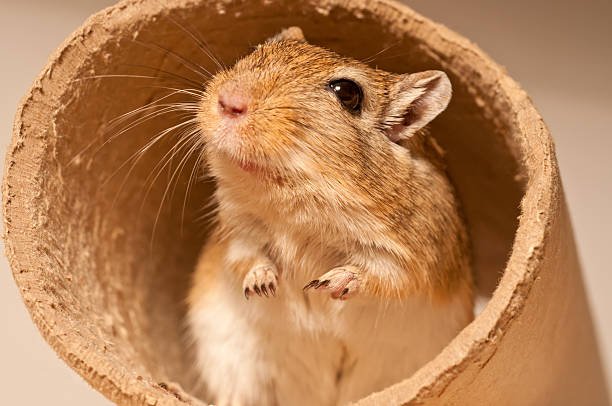Best Hideouts and Shelters for Rodents: Safe Spaces to Rest, Nest, and Hide
This post contains affiliate links. This means I will make a commission at no extra cost to you should you click through and make a purchase. Read the full disclosure here.Rodents are prey animals by nature. That means they thrive when they have places to hide, rest, and feel safe. Whether you own a hamster, guinea pig, rat, or mouse, providing the right hideout is essential for their emotional well-being.
In this blog post, we’ll cover:
- Why hideouts are critical for rodent health
- What features to look for in a good rodent shelter
- The best types of hideouts by species
- Our top 7 picks for cozy, chew-proof rodent hideouts
- DIY shelter ideas you can create at home
Let’s help your little friend feel secure and snug!
Why Every Rodent Needs a Hideout

Hiding is a natural behavior for rodents. In the wild, they retreat into burrows or dens to sleep, escape predators, raise their young, and regulate temperature.
In captivity, the same needs apply.
Providing a hideout allows your pet to:
- Reduce stress and anxiety
- Feel secure in unfamiliar environments
- Enjoy quiet time away from noise
- Sleep uninterrupted during daylight hours
Rodents without hideouts often feel exposed, anxious, and may display aggressive or fearful behavior. A cozy shelter is just as important as food and water.
What Makes a Good Rodent Hideout?
Not all shelters are created equal. Here are some features to look for:
Solid walls and roof
So your rodent feels protected from all sides.
Chew-safe materials
Avoid toxic plastic. Choose wood, ceramic, or safe hard plastics.
Ventilation
Airflow is important to avoid stuffiness.
Appropriate size
Big enough for your pet to turn around, but snug enough to feel cozy.
Easy to clean
You’ll need to remove old bedding and droppings regularly.
Bottomless (if needed)
Some rodents, like guinea pigs, prefer bottomless shelters placed on bedding.
Best Hideouts by Rodent Type
Here’s a quick guide based on species:
| Rodent | Best Hideout Type |
|---|---|
| Hamsters | Tunnel or dome with small entry |
| Rats | Multi-level huts or hammocks |
| Guinea Pigs | Open-bottom wooden or fleece shelters |
| Mice | Small, snug huts or half-log hides |
| Gerbils | Burrow-style, chewable huts |
Top 7 Hideouts for Rodents (Amazon Favorites)
We’ve rounded up some of the most recommended, safe, and cozy hideouts for rodents of all sizes:
1. Niteangel Wooden Hamster House
Why it’s great: Natural wood, chew-safe, and with multiple entry points.
- Perfect for hamsters and mice
- Non-toxic materials
- Great for nesting
2. Kaytee Igloo Hideout
Why it’s great: Lightweight plastic igloo with ventilation. Perfect for guinea pigs, rats, and large hamsters.
- Sturdy but easy to lift
- Ventilated top
- Easy to clean
3. Ware Critter Pops Hideaway
Why it’s great: 100% edible and safe to chew. Great enrichment and hiding.
- Edible hide + toy
- Perfect for small rodents
- Chew-friendly
4. Oxbow Enriched Life Small Animal Hideout
Why it’s great: Durable cardboard house that’s great for enrichment.
- Eco-friendly
- Great for hiding and chewing
- For guinea pigs, rats, and rabbits
5. Living World Tree House Real Wood Shelter
Why it’s great: Log-style shelter made from natural wood.
- Ideal for hamsters, mice, and gerbils
- Rustic and cozy
- Easy to nest inside
6. Kathson Cozy Fleece Small Animal Bed
Why it’s great: Soft and washable fleece tent, ideal for guinea pigs or rats.
- Warm and plush
- Removable pillow
- Machine washable
7. Hamiledyi Ceramic Hideout
Why it’s great: Cool, chew-proof ceramic—perfect for warm climates.
- Great for summer
- Won’t absorb odors
- Suitable for hamsters and mice
Bonus: DIY Rodent Hideout Ideas
You don’t always need to buy a shelter—here are a few budget-friendly, DIY ideas:
- Cardboard Tube Cave
Use large toilet rolls or paper towel tubes. Cut a window and line with tissue. - Tissue Box Hideout
Remove one side and fill with bedding. Great for nesting. - Terracotta Pot Shelter
Lay sideways and file the edge smooth. Sturdy and naturally cool. - Plastic Container Cave
Cut a hole in a non-toxic food container. Be sure to sand rough edges.
Always double-check for sharp edges, glue residue, or inked cardboard—these can be unsafe for chewing.
Cleaning and Maintenance Tips
Clean at least once a week. If your rodent pees in the shelter, more often.
Use bedding material like shredded paper, aspen shavings, or hay inside the shelter.
Avoid placing hideouts in direct sunlight or damp corners of the cage.
Rotate between 2–3 hideouts to keep your pet mentally stimulated.
Final Thoughts
Hideouts aren’t just cute accessories—they’re vital to your rodent’s health and happiness. A good shelter provides emotional security, safe rest, and mental enrichment.
Whether you’re buying a stylish ceramic dome, a soft fleece tent, or building a hideout from a tissue box, make sure your rodent always has a private, quiet place to call their own.
Give them the gift of comfort—and watch them curl up in contentment.














